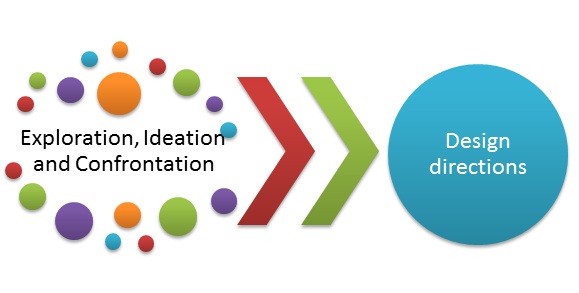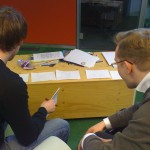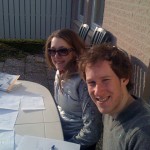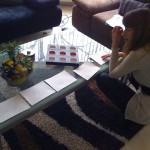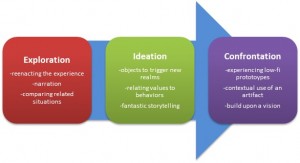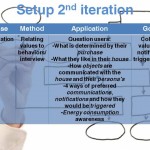Assignment DG309 – Co-reflection
Link to OWinfo:
Feedback form:
Deliverable:
Report with the aim, proposed methodology, results, analysis, concept development from the two co-reflective sessions developed and personal reflections based on the ecological validity. See here: Report Co-Reflection (ID Compass)
Competencies developed:
1,3,B
Reflection:
One of my goals was to gather new tools how to involve the user into the design cycle. The assignment Co-Reflection taught me how to integrate the co-reflective process into a dynamic design process. The co-reflection approach is a session where the designer interviews the user in order to come up with useful design input.
Co-reflection sessions in practice
I became aware that co-reflection method consists of three phases (exploration, ideation and confrontation) which all have different tools (like reengaging the experience, objects to trigger new realms and experiencing low-fi prototypes) that can be used to get a fluent dialogue with the user. It starts with immerging into the context of the user, afterwards ideating ideas and in the end confronting them with a direction for confirmation. In addition, I learned aspects to validate user experience sessions, like situated creativity of action, openness of experience, weight of answerability and sensory engagement. I visualized the co-reflection process and possible tools on the picture on the right (click to zoom):
I learned that the co-reflection method is very useful to gather information to get move on, as you can see in the slides below. It is not focusing on validating concepts, but rather giving directions how to move on. There are no good or bad results within this method. This assignment opened up my eyes for this user-centered tool, which is not based on a chronological order, but more on a dialectical investigation or philosophic questioning between the user and the designer. I learned different tightening tools (like judging, evidence or relating) and loosening tools (like association without report, initial point and avoid the important), which enable me to get the information I want and facilitate a creative state of mind. The co-reflective process is very usable in unstructured design process due to its flexible approach. This tool enables me to construct ideas based on validation and description, by getting a better understanding of the user’s context, behaviors, preferred functions and motivations, all without losing the creativity. In the end, as mentioned in the Feedback too, more practice has to be done to get known with all the co-reflection tools.
Setup 2nd co-reflection iteration and extracted results as input for the design process (click to zoom)
